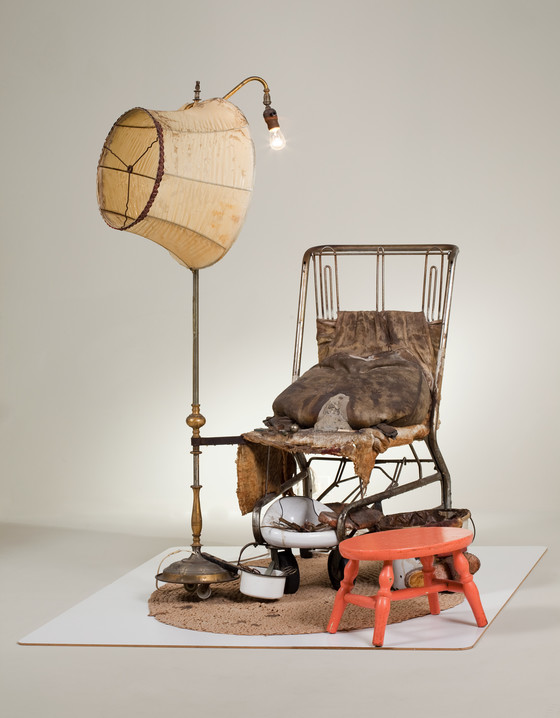The Illegal Operation

© Estate of Nancy Reddin Kienholz, courtesy of L.A. Louver, Venice, CA
Please log in to add this item to your gallery.
View comments
No comments have been posted yet.
Add a comment
Please log in to add comments.
Please log in to add tags.
* Nearly 20,000 images of artworks the museum believes to be in the public domain are available to download on this site.
Other images may be protected by copyright and other intellectual property rights.
By using any of these images you agree to LACMA's Terms of Use.
The Illegal Operation
Sculpture; assemblages
Polyester resin, pigment, shopping cart, wooden stool, concrete, lamp, fabric, basin, metal pots, blanket, hooked rug, and medical equipment
59 x 48 x 54 in. (149.86 x 121.92 x 137.16 cm)
Partial gift of Betty and Monte Factor and purchased with funds provided by the Art Museum Council, Daniel Greenberg and Susan Steinhauser, the Modern and Contemporary Art Council, Dallas Price-Van Breda and Bob Van Breda, the Robert H. Halff Fund, David G. Booth and Suzanne Deal Booth, Virginia Dwan, Elaine and Bram Goldsmith, The Grinstein Family, Ric and Suzanne Kayne, Alice and Nahum Lainer, Frederick R. Weisman Art Foundation, Mrs. Harry Lenart, The Robert Gore Rifkind Foundation, Philippa Calnan and Laura Lee Woods (M.2008.107a-d)
Currently on public view:
Broad Contemporary Art Museum, floor 3
Broad Contemporary Art Museum, floor 3
Since gallery displays may change often, please contact us before you visit to make certain this item is on view.